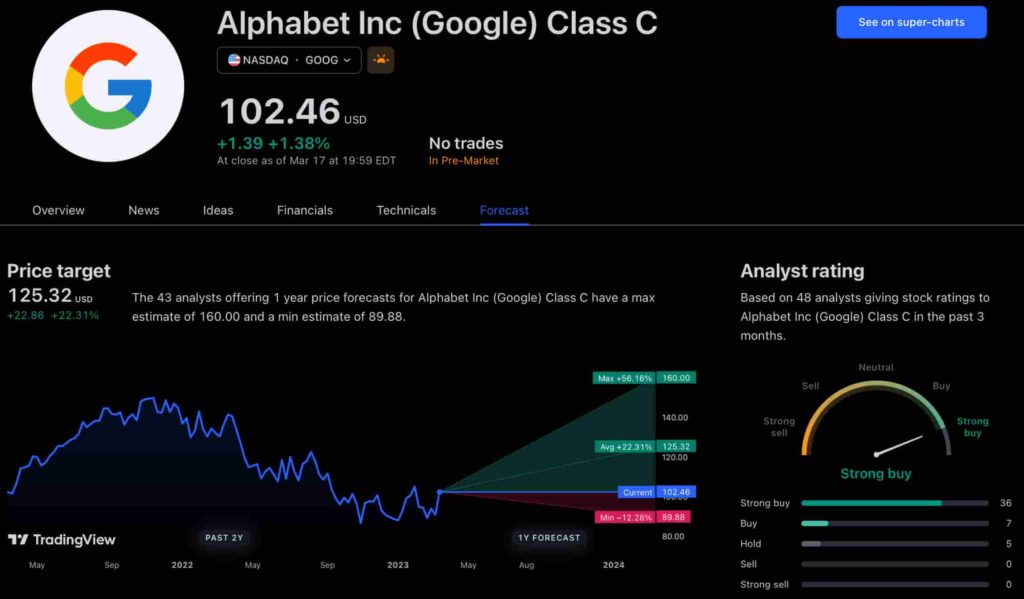The new app is called watchGPT and as I tipped off already, it gives you access to ChatGPT from your Apple Watch. Now the $10,000 question (or more accurately the $3.99 question, as that is the one-time cost of the app) is why having ChatGPT on your wrist is remotely necessary, so let’s dive into what exactly the app can do.
NEWS
YouTube introduces new feature to address toxic comments

YouTube today announced it’s launching a new feature that will push commenters to reconsider their hateful and offensive remarks before posting. It will also begin testing a filter that allows creators to avoid having to read some of the hurtful comments on their channel that had been automatically held for review. The new features are meant to address longstanding issues with the quality of comments on YouTube’s platform — a problem creators have complained about for years.
The company said it will also soon run a survey aimed at giving equal opportunity to creators, and whose data can help the company to better understand how some creators are more disproportionately impacted by online hate and harassment.
The new commenting feature, rolling out today, is a significant change for YouTube.
The feature appears when users are about to post something offensive in a video’s comments section and warns to “Keep comments respectful.” The message also tells users to check the site’s Community Guidelines if they’re not sure if a comment is appropriate.
The pop-up then nudges users to click the “Edit” button and revise their comment by making “Edit” the more prominent choice on the screen that appears.
The feature will not actually prevent a user from posting their comment, however. If they want to proceed, they can click the “Post Anyway” option instead.

Image Credits: YouTube
The idea to put up roadblocks to give users time to pause and reconsider their words and actions is something several social media platforms are now doing.
For instance, Instagram last year launched a feature that would flag offensive comments before they were posted. It later expanded that to include offensive captions. Without providing data, the company claimed that these “nudges” were helping to reduce online bullying. Meanwhile, Twitter this year began to push users to read the article linked in tweets they were about to share before tweeting their reaction, and it stopped users from being able to retweet with just one click.
These intentional pauses built into the social platforms are designed to stop people from reacting to content with heightened emotion and anger, and instead push users to be more thoughtful in what they say and do. User interface changes like this leverage basic human psychology to work, and may even prove effective in some percentage of cases. But platforms have been hesitant to roll out such tweaks as they can stifle user engagement.
In YouTube’s case, the company tells TechCrunch its systems will learn what’s considered offensive based on what content gets repeatedly flagged by users. Over time, this AI-powered system should be able to improve as the technology gets better at detection and the system itself is further developed.
Users on Android in the English language will see the new prompts first, starting today, Google says. The rollout will complete over the next couple of days. The company did not offer a time frame for the feature’s support for other platforms and languages or even a firm commitment that such support would arrive in the future.
In addition, YouTube said it will also now begin testing a feature for creators who use YouTube Studio to manage their channel.
Creators will be able to try out a new filter that will hide the offensive and hurtful comments that have automatically been held for review.
Today, YouTube Studio users can choose to auto-moderate potentially inappropriate comments, which they can then manually review and choose to approve, hide or report. While it’s helpful to have these held, it’s still often difficult for creators to have to deal with these comments at all, as online trolls can be unbelievably cruel. With the filter, creators can avoid these potentially offensive comments entirely.
YouTube says it will also streamline its moderation tools to make the review process easier going forward.
The changes follow a year during which YouTube has been heavily criticized for not doing enough to combat hate speech and misinformation on its platform. The video platform’s “strikes” system for rule violations means that videos may be individually removed but a channel itself can stay online unless it collects enough strikes to be taken down. In practice, that means a YouTube creator could be as violent as calling for government officials to be beheaded and still continue to use YouTube. (By comparison, that same threat led to an account ban on Twitter.)
YouTube claims it has increased the number of daily hate speech comment removals by 46x since early 2019. And in the last quarter, of the more than 1.8 million channels it terminated for violating policies, more than 54,000 terminations were for hate speech. That indicates a growing problem with online discourse that likely influenced these new measures. Some would argue the platforms have a responsibility to do even more, but it’s a difficult balance.
In a separate move, YouTube said it’s soon introducing a new survey that will ask creators to voluntarily share with YouTube information about their gender, sexual orientation, race and ethnicity. Using the data collected, YouTube claims it will be able to better examine how content from different communities is treated in search, discovery and monetization systems.
It will also look for possible patterns of hate, harassment and discrimination that could affect some communities more than others, the company explains. And the survey will give creators the option to participate in other initiatives that YouTube hosts, like #YouTubeBlack creator gatherings or FanFest, for instance.
This survey will begin in 2021 and was designed in consultation with input from creators and civil and human rights experts. YouTube says the collected data will not be used for advertising purposes, and creators will have the ability to opt-out and delete their information entirely at any time.
Facebook Faces Yet Another Outage: Platform Encounters Technical Issues Again

Uppdated: It seems that today’s issues with Facebook haven’t affected as many users as the last time. A smaller group of people appears to be impacted this time around, which is a relief compared to the larger incident before. Nevertheless, it’s still frustrating for those affected, and hopefully, the issues will be resolved soon by the Facebook team.
Facebook had another problem today (March 20, 2024). According to Downdetector, a website that shows when other websites are not working, many people had trouble using Facebook.
This isn’t the first time Facebook has had issues. Just a little while ago, there was another problem that stopped people from using the site. Today, when people tried to use Facebook, it didn’t work like it should. People couldn’t see their friends’ posts, and sometimes the website wouldn’t even load.
Downdetector, which watches out for problems on websites, showed that lots of people were having trouble with Facebook. People from all over the world said they couldn’t use the site, and they were not happy about it.
When websites like Facebook have problems, it affects a lot of people. It’s not just about not being able to see posts or chat with friends. It can also impact businesses that use Facebook to reach customers.
Since Facebook owns Messenger and Instagram, the problems with Facebook also meant that people had trouble using these apps. It made the situation even more frustrating for many users, who rely on these apps to stay connected with others.
During this recent problem, one thing is obvious: the internet is always changing, and even big websites like Facebook can have problems. While people wait for Facebook to fix the issue, it shows us how easily things online can go wrong. It’s a good reminder that we should have backup plans for staying connected online, just in case something like this happens again.
NEWS
We asked ChatGPT what will be Google (GOOG) stock price for 2030

Investors who have invested in Alphabet Inc. (NASDAQ: GOOG) stock have reaped significant benefits from the company’s robust financial performance over the last five years. Google’s dominance in the online advertising market has been a key driver of the company’s consistent revenue growth and impressive profit margins.
In addition, Google has expanded its operations into related fields such as cloud computing and artificial intelligence. These areas show great promise as future growth drivers, making them increasingly attractive to investors. Notably, Alphabet’s stock price has been rising due to investor interest in the company’s recent initiatives in the fast-developing field of artificial intelligence (AI), adding generative AI features to Gmail and Google Docs.
However, when it comes to predicting the future pricing of a corporation like Google, there are many factors to consider. With this in mind, Finbold turned to the artificial intelligence tool ChatGPT to suggest a likely pricing range for GOOG stock by 2030. Although the tool was unable to give a definitive price range, it did note the following:
“Over the long term, Google has a track record of strong financial performance and has shown an ability to adapt to changing market conditions. As such, it’s reasonable to expect that Google’s stock price may continue to appreciate over time.”
GOOG stock price prediction
While attempting to estimate the price range of future transactions, it is essential to consider a variety of measures in addition to the AI chat tool, which includes deep learning algorithms and stock market experts.
Finbold collected forecasts provided by CoinPriceForecast, a finance prediction tool that utilizes machine self-learning technology, to anticipate Google stock price by the end of 2030 to compare with ChatGPT’s projection.
According to the most recent long-term estimate, which Finbold obtained on March 20, the price of Google will rise beyond $200 in 2030 and touch $247 by the end of the year, which would indicate a 141% gain from today to the end of the year.
Google has been assigned a recommendation of ‘strong buy’ by the majority of analysts working on Wall Street for a more near-term time frame. Significantly, 36 analysts of the 48 have recommended a “strong buy,” while seven people have advocated a “buy.” The remaining five analysts had given a ‘hold’ rating.

The average price projection for Alphabet stock over the last three months has been $125.32; this objective represents a 22.31% upside from its current price. It’s interesting to note that the maximum price forecast for the next year is $160, representing a gain of 56.16% from the stock’s current price of $102.46.
While the outlook for Google stock may be positive, it’s important to keep in mind that some potential challenges and risks could impact its performance, including competition from ChatGPT itself, which could affect Google’s price.
Disclaimer: The content on this site should not be considered investment advice. Investing is speculative. When investing, your capital is at risk.
NEWS
This Apple Watch app brings ChatGPT to your wrist — here’s why you want it

ChatGPT feels like it is everywhere at the moment; the AI-powered tool is rapidly starting to feel like internet connected home devices where you are left wondering if your flower pot really needed Bluetooth. However, after hearing about a new Apple Watch app that brings ChatGPT to your favorite wrist computer, I’m actually convinced this one is worth checking out.
-

 PPC6 days ago
PPC6 days ago19 Best SEO Tools in 2024 (For Every Use Case)
-

 MARKETING7 days ago
MARKETING7 days agoEcommerce evolution: Blurring the lines between B2B and B2C
-
SEARCHENGINES5 days ago
Daily Search Forum Recap: April 19, 2024
-
SEARCHENGINES6 days ago
Daily Search Forum Recap: April 18, 2024
-

 WORDPRESS6 days ago
WORDPRESS6 days agoHow to Make $5000 of Passive Income Every Month in WordPress
-

 SEO7 days ago
SEO7 days ago2024 WordPress Vulnerability Report Shows Errors Sites Keep Making
-

 WORDPRESS6 days ago
WORDPRESS6 days ago10 Amazing WordPress Design Resouces – WordPress.com News
-
WORDPRESS7 days ago
[GET] The7 Website And Ecommerce Builder For WordPress















